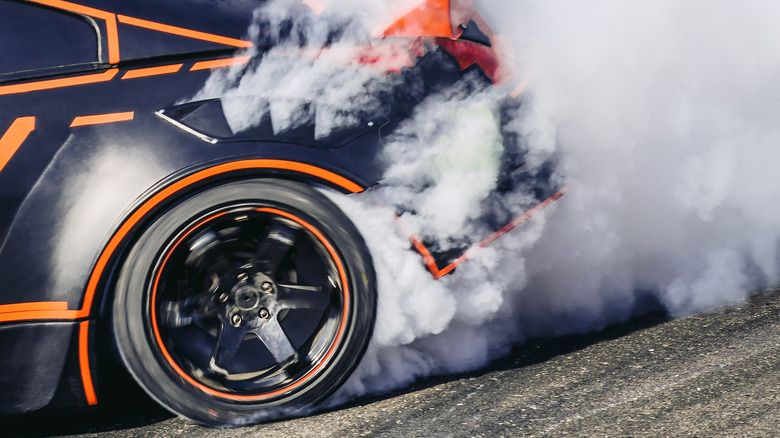How Regular Tire Checks Determines Road Stability
페이지 정보
작성자 yqaxipux 작성일25-11-27 02:03 조회4회 댓글0건관련링크
본문
Picking the correct tires for drifting directly affects precision, grip, and slide quality. The sport of drifting puts unique pressure on tire construction, meaning poor tire selection can lead to unpredictable handling. The compound is the foundation of drift tire behavior. Soft tires give excellent traction but burn fast, whereas hard tires are more durable but slide more easily. Rear drift tires are usually medium to hard, ensuring both drift stability and acceptable wear rate.

The tread design also plays a major role. Slicks or semi-slicks offer stable slides but react strongly to temperature changes, whereas patterned tires improve traction and wet performance. Some tread helps entry-level drivers stay stable, whereas professionals lean toward slick-style setups for precision.
Tire size is equally important for drift performance. Wider profiles grip harder but need stronger engines, narrow tires are easier to spin and control for beginners. Most drivers choose a width that suits their engine output and driving style, ensuring predictable transitions.

Brand reputation and manufacturing quality matter greatly, because drifting generates extreme heat and friction, putting low-tier tires at high risk of structural failure. Buying from reliable service centers protects against defects. For example, some drivers check professional tire services like wulkanizacja nowy targ to get reliable, well-matched tire options. Temperature tolerance is critical for drifting, since continuous sliding generates intense heat, meaning your tires must withstand repeated heating and cooling. This prevents blowouts, tread separation, and unsafe grip drops.Another crucial factor for drift tire performance is sidewall stiffness, since firm sidewalls resist deformation during intense cornering, allowing drivers to predict how the tire will react during transitions. Alternatively, softer sidewalls may cause delayed reactions, making the car feel unstable in fast transitions. Drift-focused tires often feature reinforced sidewalls, leading to improved steering precision.
Vehicle weight balance plays an important role in selecting drift tires, because heavier cars generate more heat and require stronger compounds, demanding compounds that can tolerate extreme conditions. On the other hand, lightweight vehicles often work well with softer tires, which make drift initiation easier and more fluid. Choosing tires according to vehicle weight ensures optimal performance, resulting in better energy transfer and improved slide quality. Surface type greatly affects drift tire choice, as smoother surfaces reduce grip and heat production, enabling longer drift runs without overheating. Rougher surfaces generate more heat and rubber abrasion, necessitating tougher rubber to avoid rapid destruction. Many drift drivers research surface conditions before competitions, helping drifters maximize consistency throughout the event. Regularly rotating tires helps maintain predictable drift performance, because drifting causes uneven wear patterns, especially because rear tires handle most drift stress. Proper rotation allows drivers to use tires more efficiently, improving overall cost-effectiveness in competitive drifting. Track teams often rotate tires during drift events, ensuring balanced wear and consistent performance.
Tire pressure tuning is another critical performance factor, because lower pressure increases grip and surface contact, helping with drift initiation and smoother slide transitions. Conversely, increased pressure allows more effortless drift initiation, providing sharper, more aggressive slide behavior. Adapting tire pressure to weather and surface conditions is key, ensuring maximum consistency and predictable drift behavior. Heat cycles play an important role in the durability of drift tires, because rubber changes its properties after repeated heating, making old tires less predictable. Professional drivers track the number of heat cycles, replacing tires before they become unsafe. Understanding heat cycles helps drivers maintain control and safety. Driver skill level also influences tire selection, since softer compounds help inexperienced drivers learn controlled slides, reducing the chance of spinouts. Advanced drifters, however, prefer aggressive tire setups, to maintain precision during competitive runs. Matching tire choice to skill level ensures steady progression, ultimately improving traction management and drift control.
To conclude, the perfect drift tire depends on rubber type, tread design, width, and quality. Different drivers need different setups based on power, experience, and conditions. Selecting wisely guarantees better control, consistency, and confidence.
댓글목록
등록된 댓글이 없습니다.

